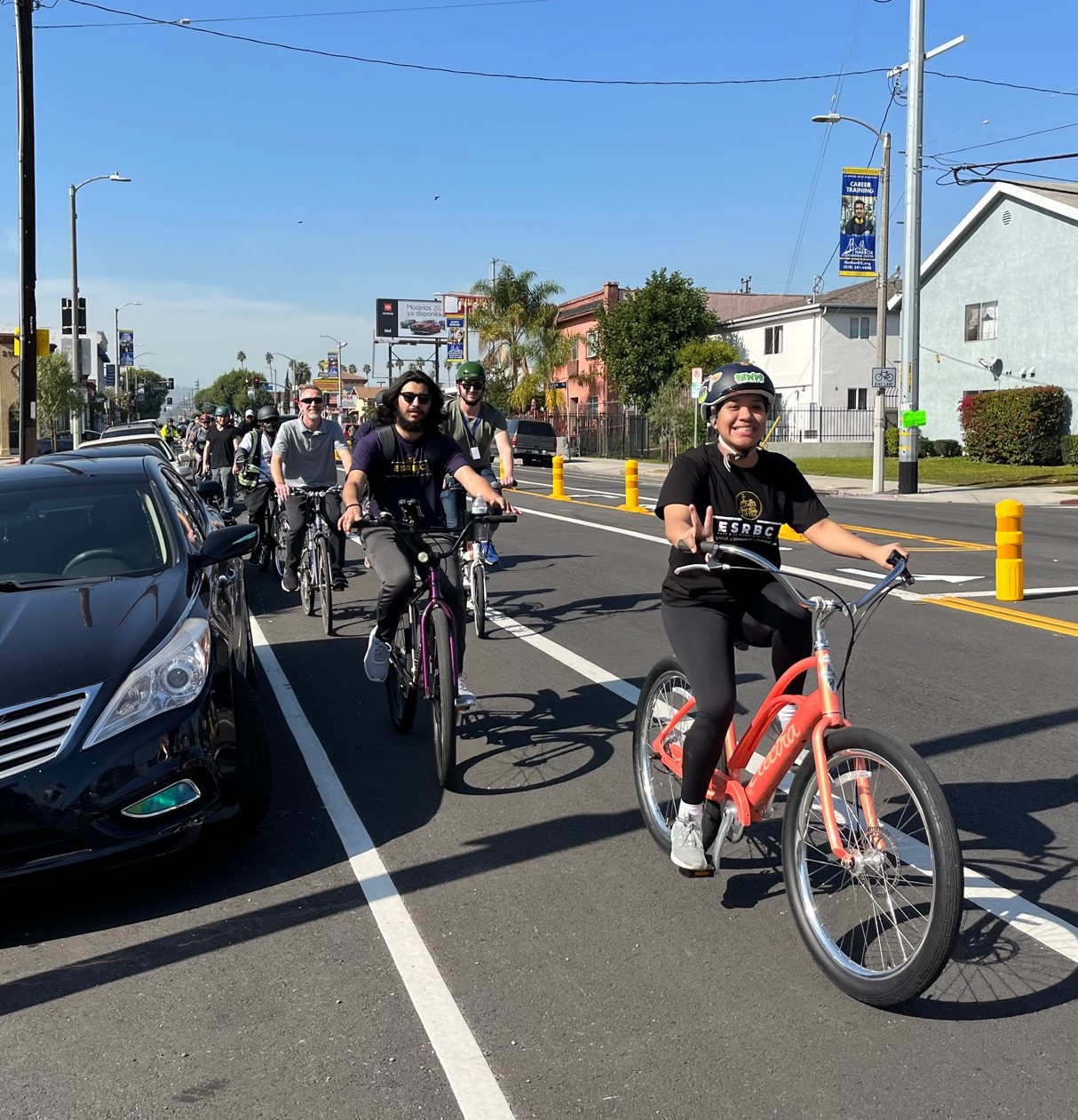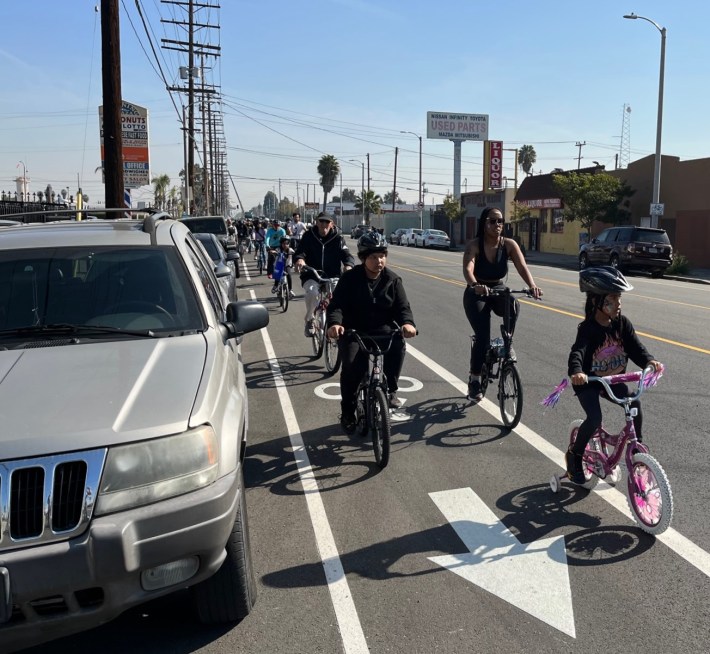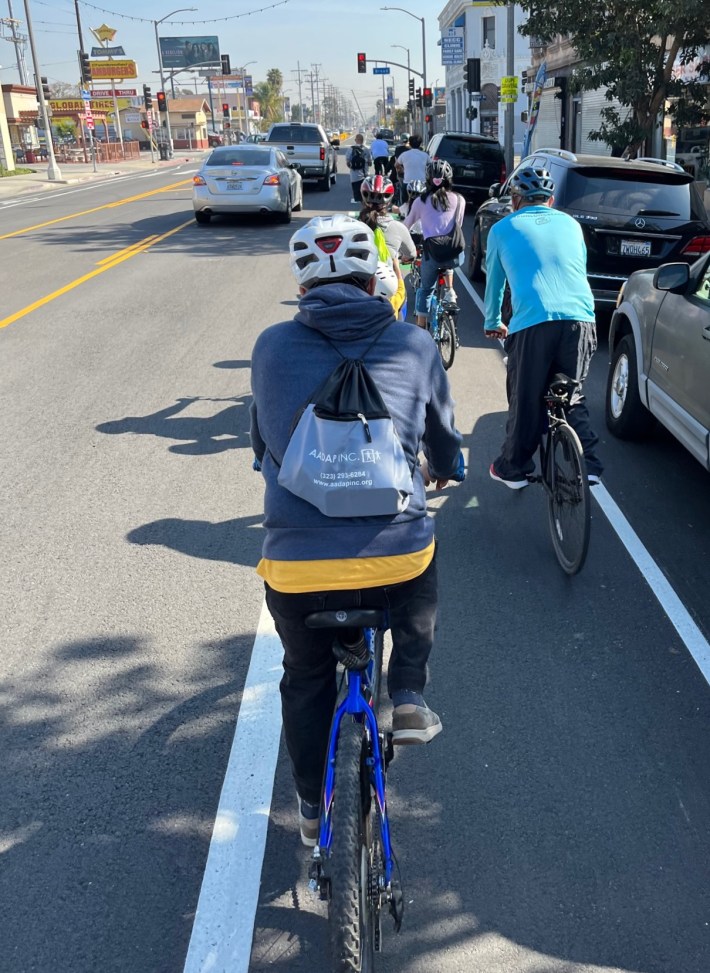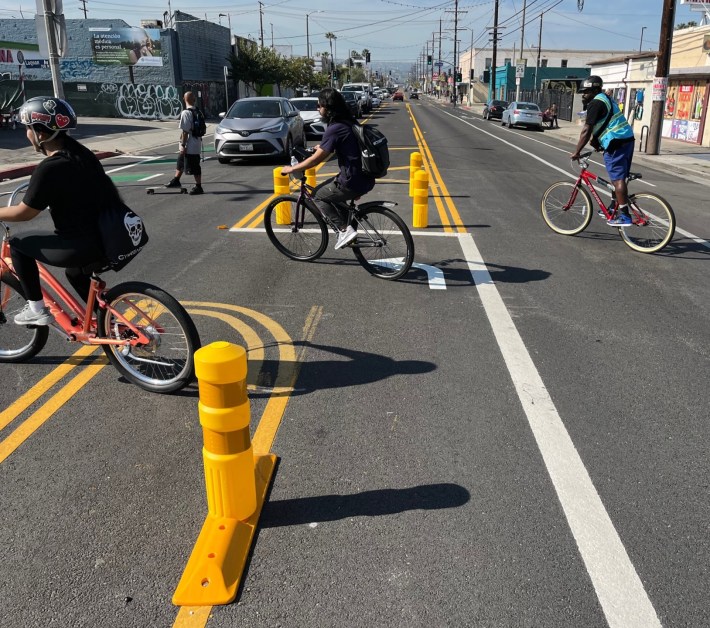Last Saturday, over a hundred people took part in a Wilmington Safe Streets celebration hosted by the L.A. City Department of Transportation (LADOT), the nonprofit People for Mobility Justice, and additional community groups. The centerpiece of the event was a bike tour of new safety improvements on Anaheim Street, Wilmington's main east-west artery.
Wilmington is a predominantly low-income Latino community that suffers from polluted air due to its proximity to the Port of Los Angeles and its neighboring industrial areas, which are home to a couple of large oil refineries. The community is somewhat isolated from much of Southern California due to barriers that include freeways, waterfront, waterways, and rail.
For about a decade, the Wilmington neighborhood has had L.A.'s highest concentration of bike lanes, mostly due to a high concentration of excess street widths. Those bikeway facilities had been largely opportunistic, until LADOT's Anaheim Street Safety Improvements project upgraded the community's main drag. Anaheim Street has experienced significant cut-through traffic, speeding, and traffic fatalities and serious injuries.
Work on Anaheim Street got underway in November and is now nearing completion.
The project includes plenty of new features supporting safer walking and bicycling:
- About two miles (four lane miles) of new road diet bike lanes from Figueroa Street to Alameda Street - mostly unprotected, but with about two-thirds of a mile of plastic-bollard-protected lane east of Banning Boulevard. These include center median bicycle turn treatments at three streets that jog at Anaheim: McDonald, Lagoon, and Lakme Avenues. The bikeway also features the city’s first pretty-much-protected intersection at Broad Avenue.
- Repaved street
- Painted curb extensions
- Upgraded crosswalks, including six newly signalized ones
- Pedestrian head-start signals (called leading pedestrian intervals)
- Upgrades to Neptune Avenue, including curb extensions, mini-roundabouts, a one-way northbound bike lane, and the city's first back-in diagonal parking (serving the Wilmington Recreation Center)
Anaheim's street striping is largely done, though some green pavement and some plastic bollards have not been installed yet, and new traffic signals have not been turned on.
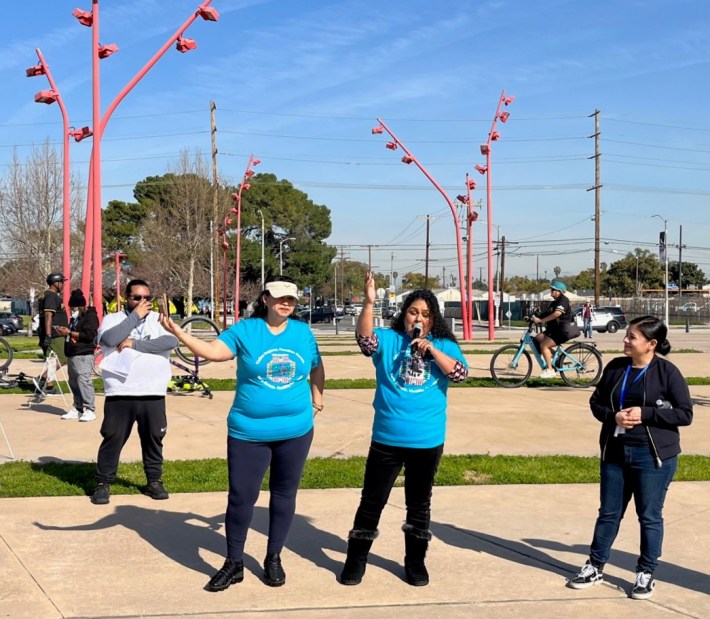
Though there have been some driver complaints, Los Angeles Walks safety promotoras Gaby Segovia and Maria Serafin note that the facility is working as intended. According to Segovia, Anaheim was experiencing "mas de tres o quatro choques cada semana," [more than three to four crashes each week] so "este proyecto la principal razón por la que se haces es para disminuir la velocidad" [the project's main purpose is to slow down speeds].
LADOT Vision Zero Transportation Planner Matt Gertz emphasized that Anaheim Street improvements make it "safer for people who walk, bike, roll, and drive." Gertz noted that the current features are just an initial phase, done with "interim materials like paint and plastic," and announced that the city recently secured a $32 million state Active Transportation Program (ATP) grant to build out Anaheim (and Neptune and connecting streets) improvements in concrete, as well as to add more lighting, trees, and additional safety features.
Below are photos from Saturday's event.
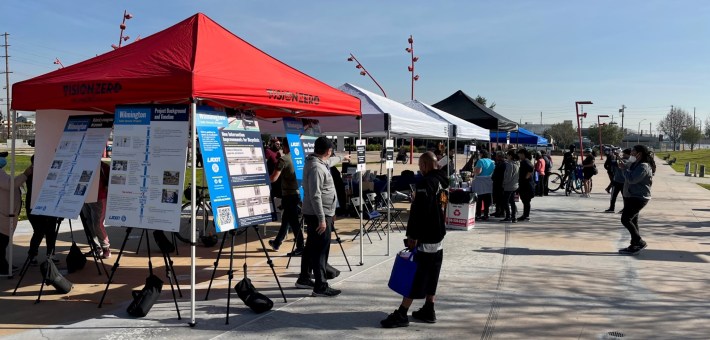
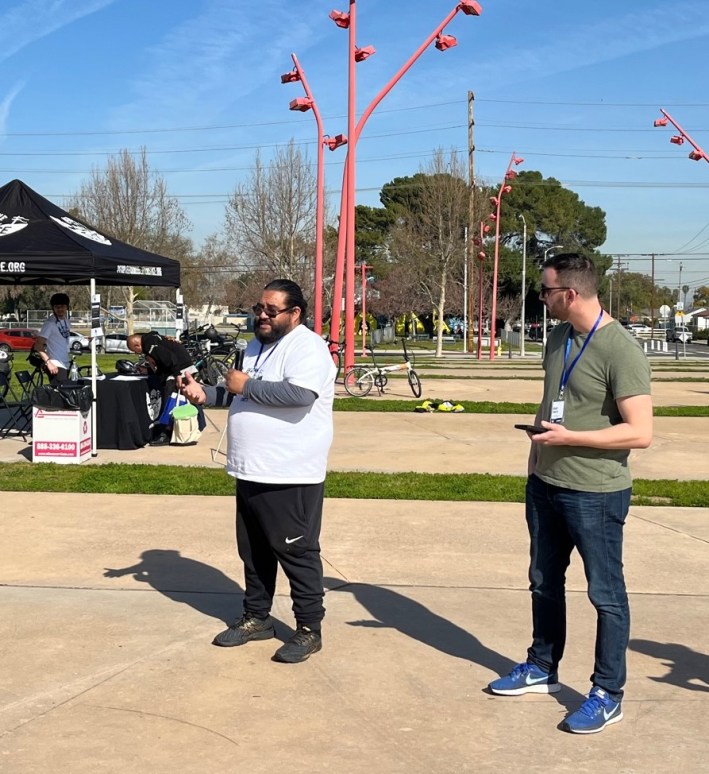
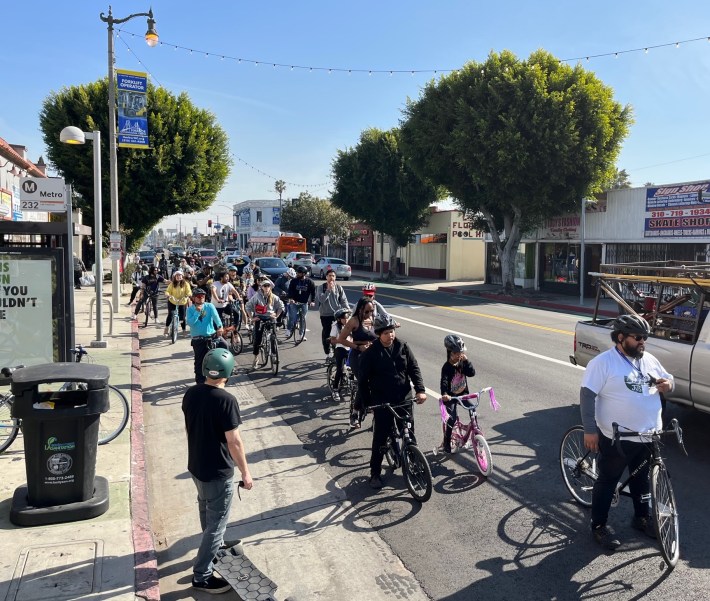
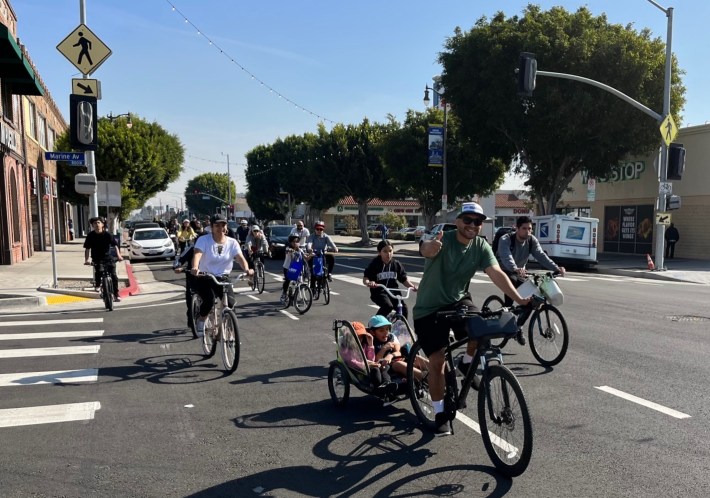
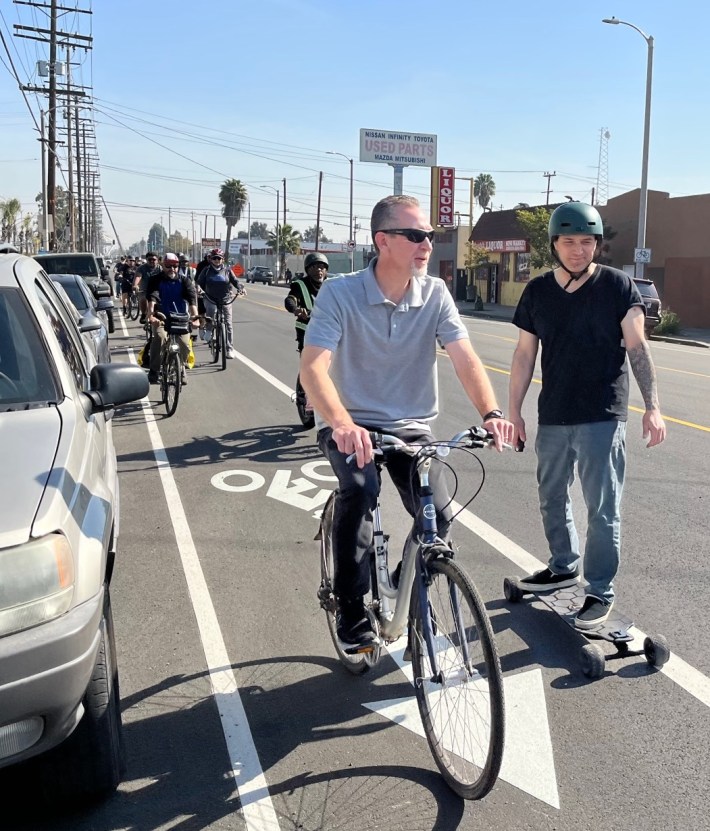
The Anaheim Street project, though not yet completed, has drawn some scrutiny from the community’s new City Councilmember, Tim McOsker. McOsker introduced a motion (council file 22-1568) stating that “residents have expressed concern about the impact of these [Anaheim Street] changes” and directing LADOT “to report on effects of the traffic calming measures and safety improvements” there. The motion is scheduled to receive a vote at this Wednesday's Transportation Committee meeting.
